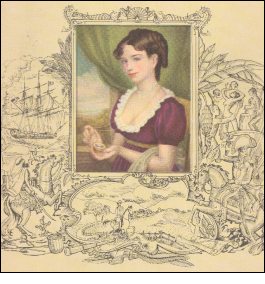Lydia Bailey
Jan/25/10 01:11 AM Filed in: People
a novel about Haiti in the year 1800

In 1947 Kenneth Roberts wrote a historical novel about Haiti’s struggle for independence from the French. The story revolves around a young American woman named Lydia Bailey who goes to Haiti as a governess in 1800. It is a romantic novel which blends both history and adventure in a country which is again struggling: this time from a devastating earthquake. Because of the relief work being carried out in Port-Au-Prince, I decided to read Robert’s novel for the third time. The author gives a fairly accurate description of the country and the people living there.
“Haiti, the French part of San Domingo, is like the back of a man’s right hand when he holds it before his face, forefinger and little finger extending to the left, the two middle fingers folded against the palm, and the thumb pressed out of sight against the hidden fingers. The knuckles are the dividing-line between the French part of the island and the Spanish part. The space between the two fingers is the seventy-mile-wide, pale green, pale blue Bight (bay) of Leogane. The extend little finger, almost touching the outstretched nose of Cuba, is the Great North Plain, which the capital city (in 1800) of Cap Francois at the upper edge of the large joint. The depression between the down-folded middle fingers is the valley of the Artibonite, walled by mountain chains whose names are as fantastic as their shapes. At the base of the index finger, where it joins the down-folded second finger, is Port-Au-Prince, a hundred miles south of Cap Francois across a stormy sea of mountains. And between the knuckle and the first joint of the outstretched index finger are the rich sugar, rum, and coffee sections of Leogane, Jacmel, and the Cul de Sac.”
Roberts goes on to tell how the island once belonged to Frenchmen and mulattoes who had become fabulously wealthy by forcing hundreds of thousands of black slaves to work in the fields until they dropped from exhaustion. It was those black slaves who had risen against the brutality of their masters and in 5 short years had turned the richest island of the Indies into a shambles of death and destruction. Because the slaves were free they refusing to work. The major portion of the novel revolves around Napoleon Bonaparte’s effort to take over Haiti and use the island as his base to attack the United States of America.

